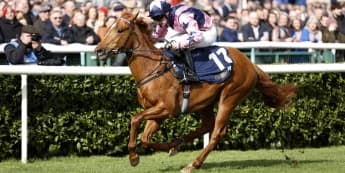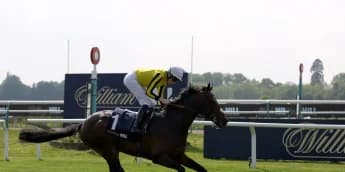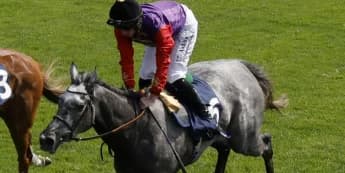As Sir Michael Stoute prepares to send out his potential final runner in Wanderlust, the racing world reflects on his unparalleled legacy of transforming ordinary horses into extraordinary champions over four remarkable decades.
Today, the racing world finds itself at a pivotal moment as Sir Michael Stoute, one of the sport's most respected trainers, is set to send out what could be his last runner in Britain. At Nottingham, the 3.50pm handicap race will showcase Wanderlust, potentially signaling the conclusion of an era. Stoute's career, which has unfolded over decades and witnessed the emergence of numerous champions, is approaching its final chapter, prompting the racing community to contemplate the profound impact of his training philosophy—especially his remarkable talent for elevating horses into superior versions of themselves. The significance of today’s race extends beyond being the season's finale at Nottingham. With Wanderlust taking center stage, it may indeed represent Stoute's final turf runner in Britain, as there are no further entries planned for the end of the season on Saturday. In a sport characterized by swift changes, the notion of Stoute's departure feels almost surreal, considering the substantial influence he has wielded over British racing for more than forty years.
During his prime, Sir Michael’s stable became renowned for producing the 'improver'—a horse that came into his care seemingly without promise, only to flourish into a champion thanks to his diligent training. Consider Pilsudski, a perfect example of the Stoute transformation. After four unsuccessful races, he achieved his first victory in a modest handicap with a rating of merely 82. However, by the conclusion of his career, Pilsudski had triumphed in Group 1 races worldwide, including a win at the Breeders' Cup Turf, accumulating nearly £3 million in prize earnings. For bettors, the key takeaway was the importance of persistence: one should never underestimate a Stoute runner, particularly following a lackluster beginning.
Additional names that reflect this trend include Opera House, Medicean, Harbinger, Ulysses, and, more recently, Bay Bridge—the list is extensive and impressive. Horses trained by Stoute frequently did not showcase their full potential at first, only to demonstrate remarkable improvement as the years progressed. Stoute excelled at fostering confidence, especially among owners who were prepared to endure early setbacks because they believed in the gradual enhancement of his horses. A common saying arose: “Next year, he'll really come into his own.”
However, it wasn't solely the horses that saw improvement under Stoute; the trainer himself adapted alongside the sport. His training techniques, characterized by precision rather than extravagance, transformed the conditioning of horses for significant races. Stoute's limited remarks to the press, coupled with the enigmatic atmosphere of his stables, only enhanced the perception of greatness surrounding him. Whenever Stoute voiced uncertainty, it felt as though his 'doubts carried more weight than the certainties of other trainers.'
This unique blend of humility, patience, and a methodical, scientific training approach enabled Stoute to maximize the potential of his horses, no matter their initial abilities.
Consider Ulysses as another noteworthy example. Initially, he achieved his first win as a maiden on the racetrack, but he later went on to secure multiple Group 1 victories, including the esteemed Juddmonte International. Despite his clear abilities, the early assessments of Ulysses were not particularly optimistic, as Stoute's cautious remarks suggested a different perspective. Stoute’s talent was in recognizing when to pursue a longer, more methodical route to achievement.
This characteristic has defined his career: with his expert guidance, horses that might have been overlooked in other stables discovered renewed vigor and performance capabilities that many deemed unattainable. The remarkable progression of his horses from one season to the next became a hallmark of Stoute’s training, solidifying his standing as a true master of patience and precision.
As the sport looks ahead, a pressing question emerges: who will succeed in taking up the mantle of the 'improver'? Owen Burrows, who has exhibited glimpses of similar promise, could be a contender to monitor, yet at this moment, the distinct legacy of Sir Michael Stoute remains unmatched. His exit from the training scene signifies not merely the loss of an exceptional trainer but also marks the conclusion of an era where surprises were always within reach.
As Wanderlust competes today, Sir Michael Stoute’s career may quietly reach its conclusion, yet his legacy is sure to resonate within British racing for many years to come. The sport has evolved significantly over the decades, but one fact stands out: Stoute’s influence on racehorse training, especially his remarkable ability to turn seemingly average competitors into remarkable champions, is nothing less than legendary. As we say goodbye to one of the sport's finest, we are left to ponder whether we will encounter another of his caliber in the future. For now, it is a moment to reflect on a career that exemplified excellence—and to remember the horses that bore his unmistakable imprint.







